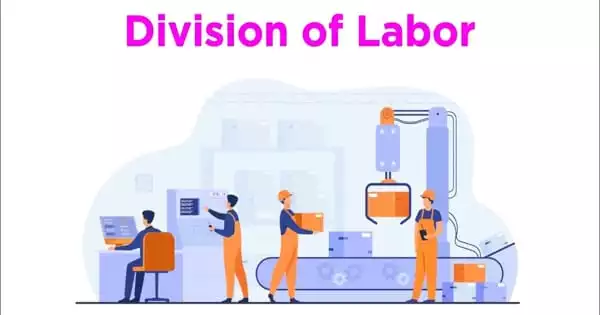The division of labor is an economic concept that asserts that splitting the manufacturing process into stages allows people to focus on specialized jobs. It is the division of duties in any economic system or organization that allows participants to specialize (specialization). If workers can focus on one particular component of manufacturing, overall efficiency improves, as long as there is adequate volume and amount generated. Individuals, organizations, and nations are gifted with or acquire particular capabilities, and they either create alliances or trade in order to benefit from the capabilities of others in addition to their own.
Equipment or natural resources, as well as skills and training, are examples of specialized capabilities, and combinations of such assets functioning together are frequently crucial. An individual, for example, may specialize by collecting tools and the expertise to effectively utilize them, whereas an organization may specialize by obtaining specialized equipment and recruiting or training skilled operators. The motivation for trade and the source of economic interdependence is the division of labor.
Adam Smith popularized this concept in An Inquiry into the Nature and Causes of the Wealth of Nations (1776). He famously cited a pin factory as an illustration. Adam Smith observed that by dividing people and assigning them distinct duties in the creation of a pin, production efficiency was greatly boosted.
Division of labor CPU and GPU
An expanding division of labor has historically been related with increased total output and commerce, the rise of capitalism, and the increasing complexity of industrialized processes. The notion and practice of division of labor can be found in ancient Sumerian (Mesopotamian) society, when job assignment in some towns coincided with an expansion in trade and economic interdependence. In general, division of labor boosts both producer and individual worker productivity.
Pastoralism and agriculture led to more reliable and abundant food supplies after the Neolithic Revolution, which expanded population and led to the specialization of labor, including new classes of artisans, warriors, and the rise of elites. This specialization was aided by the industrialization process and factories built during the Industrial Revolution.
As a result, many classical economists, as well as some mechanical engineers like Charles Babbage, advocated for division of labor. Furthermore, having people execute single or limited jobs eliminated the lengthy training period required to teach craftsmen, who were replaced with lower-paid but more productive unskilled workers.
Why is labor division more efficient –
- Workers require minimal training because they simply need to master a few tasks.
- Using a single tool to complete a single task is more efficient.
- No time is lost when a worker drops one tool and then picks up another.
- Workers might get loyalty and a sense of accomplishment from their line of work.
- There is no need for them to walk throughout the facility because the half-finished product is delivered to them.
















